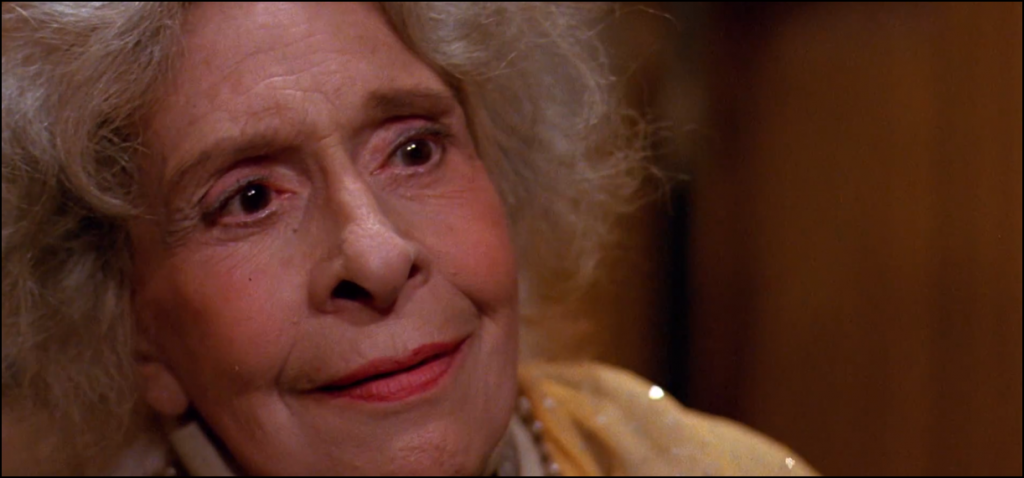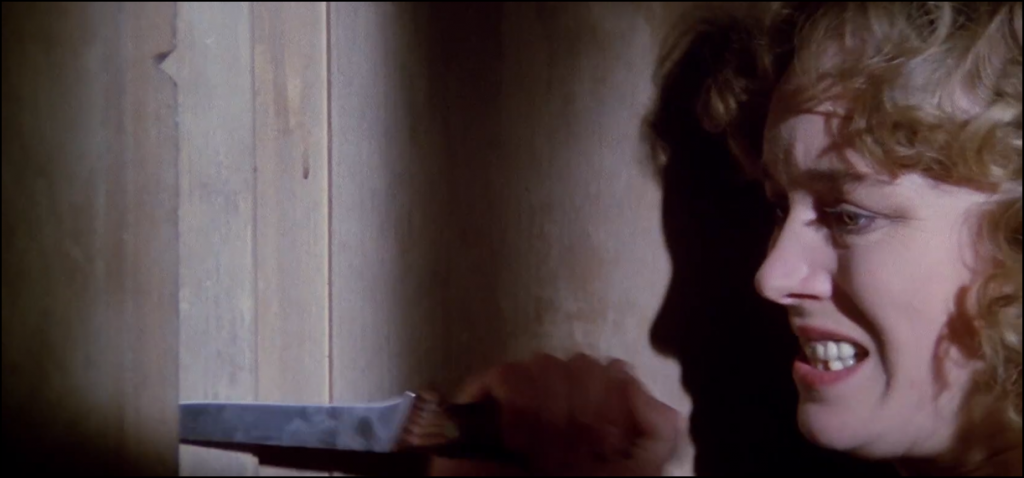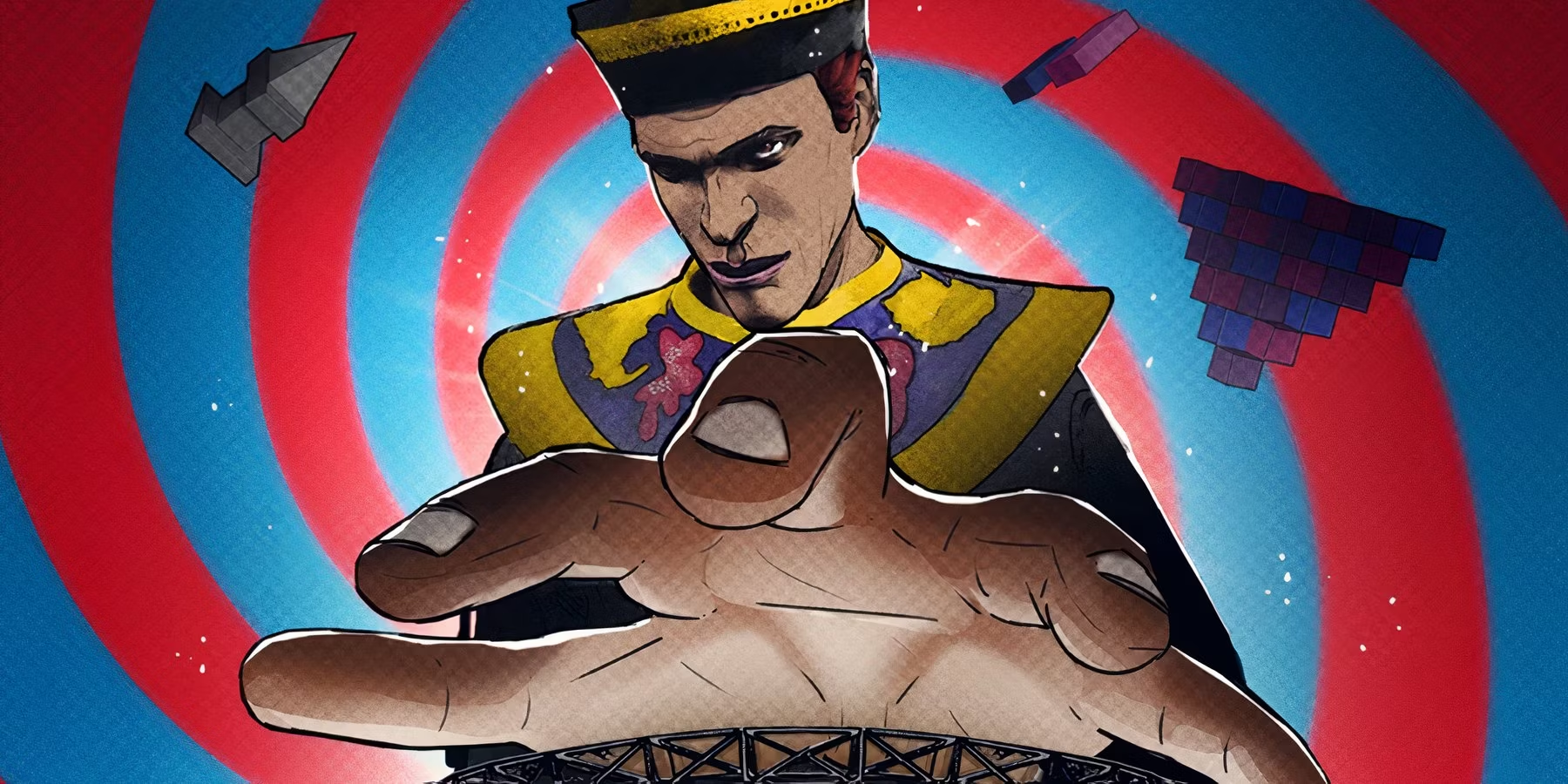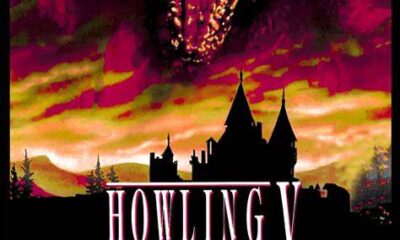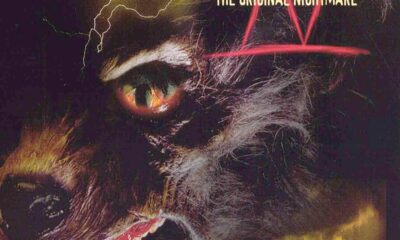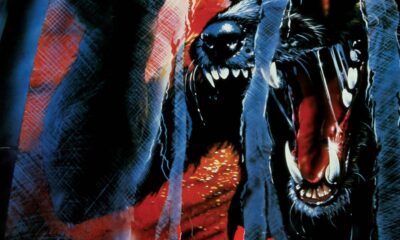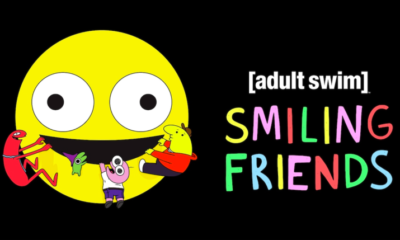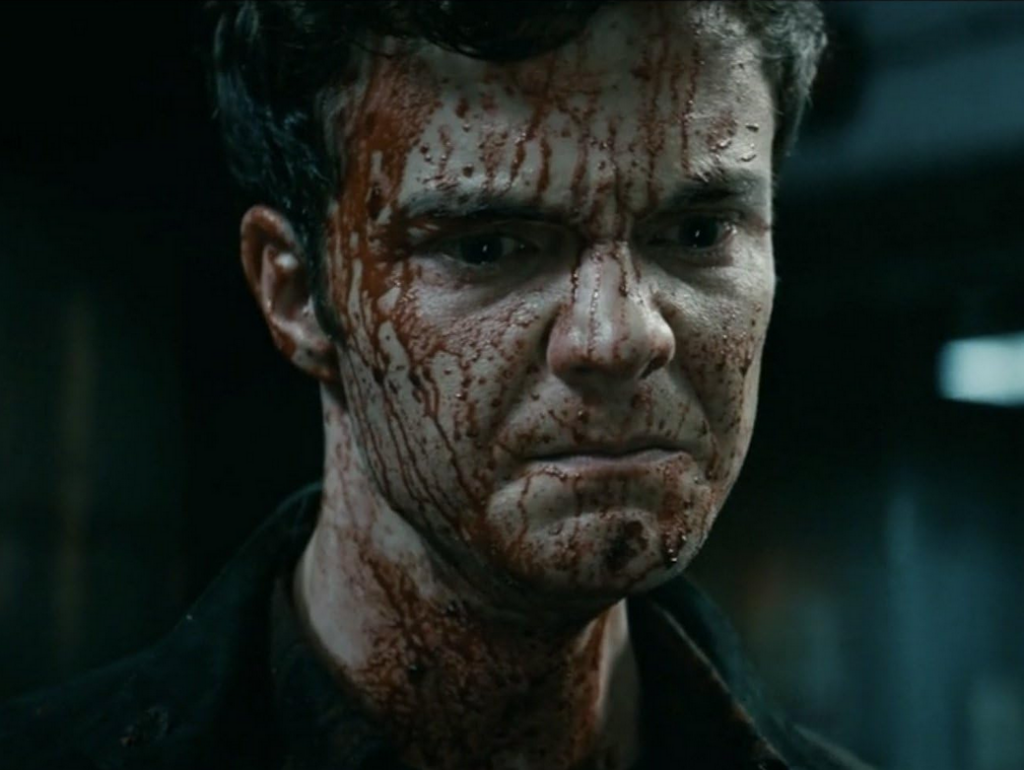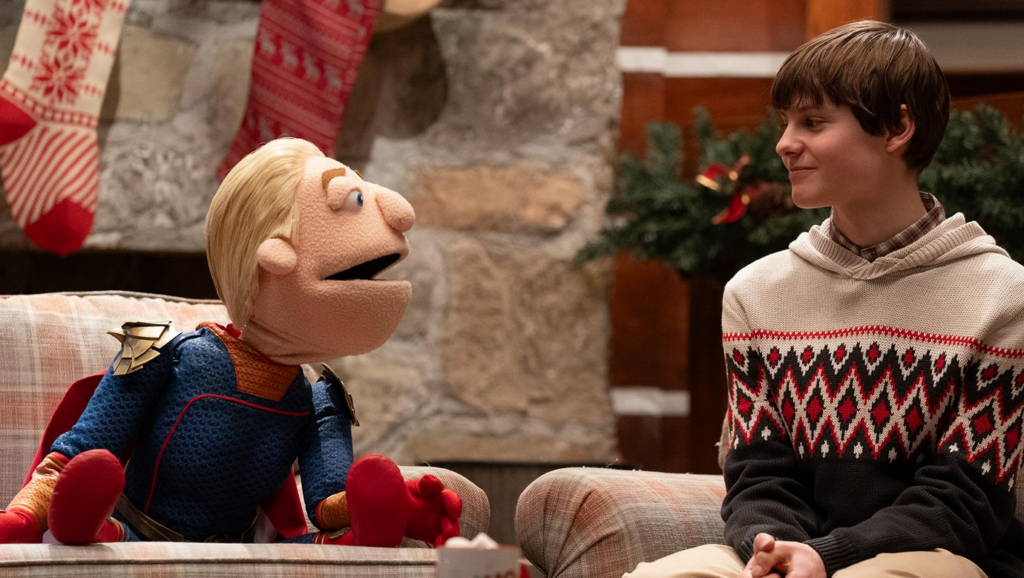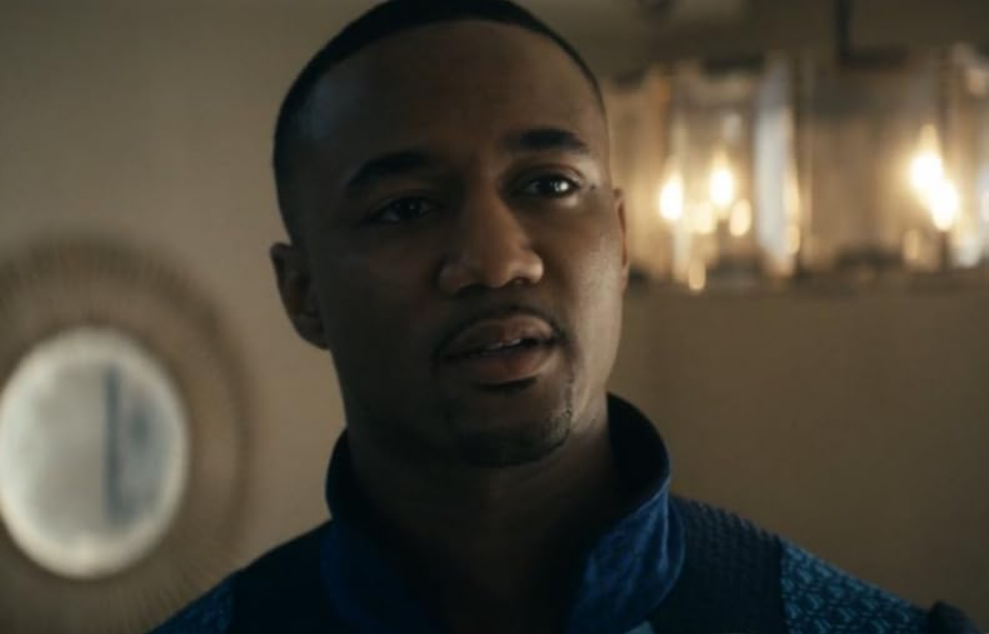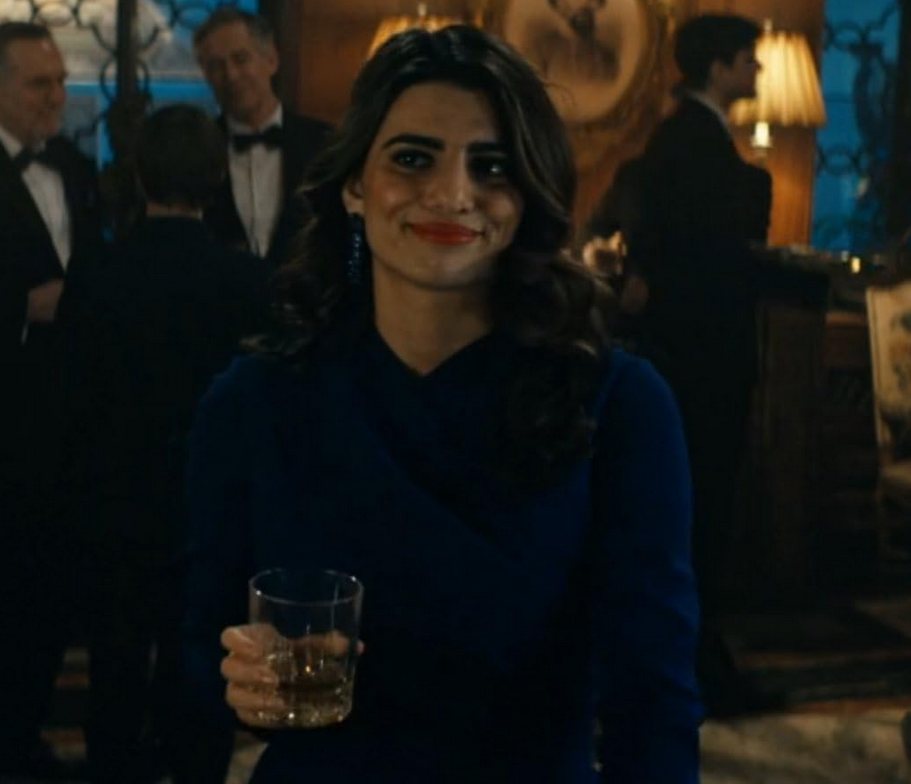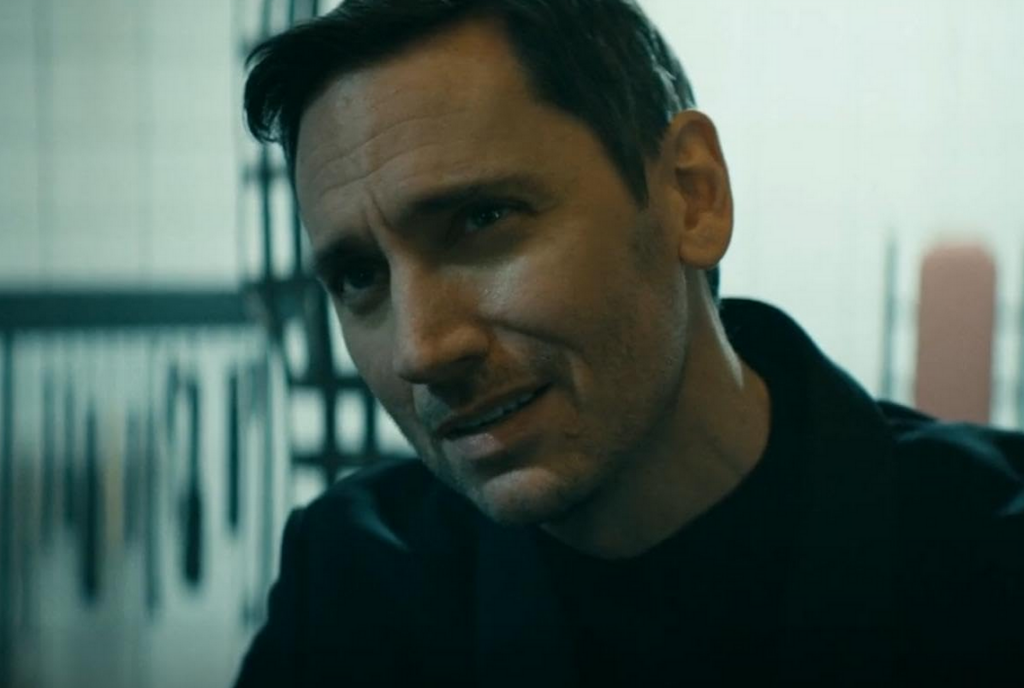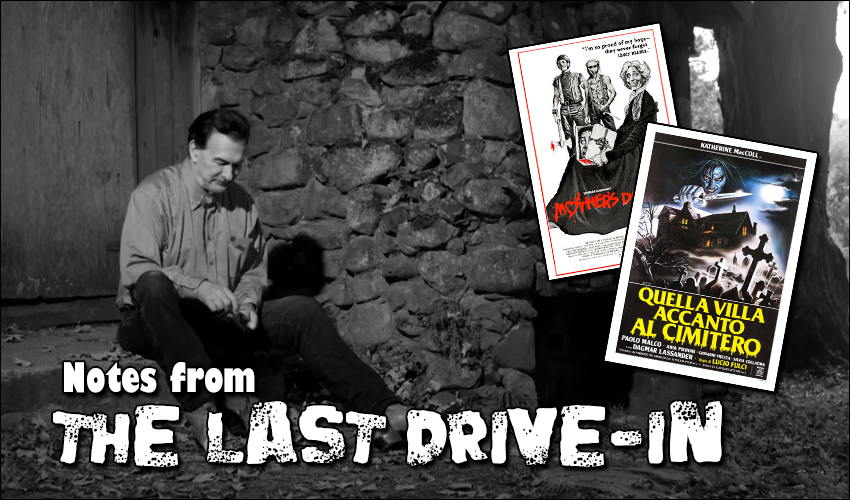
Notes from the Last Drive-In: S3E1 – Mother’s Day and House By the Cemetery
More Videos
Published
3 years agoon
We’re back at the Shudder drive-in and ooh, doesn’t that feel good to say, time to unwind with House by the Cemetery (1981) and Mother’s Day (1980). The specials between the seasons are great and really feel like events, but the weekly show is where it is at. We have a very special episode this week with a Drive-In first, a guest who hangs around for both films! Eli Roth joins Joe Bob from a remote location to school viewers regarding Troma and Italian horror.
It’s gonna be very scary, much like the tweet below from.
Challenge accepted. #TheLastDriveIn #JoeBobBob https://t.co/MQWxvGTodT pic.twitter.com/6IpfxOXvVS— Shudder (@Shudder) April 17, 2021
Mother’s Day (1980)
*abandoned house exists*
Horror director:#thelastdrivein @therealjoebob @kinky_horror @shudder pic.twitter.com/DiDAa18u3W— Haunted MTL 🏳️🌈 (@HauntedMTL) April 17, 2021
Opening: Ah, the Psycho Hag.
Mother’s Day, directed by Charles Kaufman, Lloyd’s brother, is what we’d consider an early slasher. However, it is also one that absolutely nails the tropes and developments of the genre early on. The film, stars Nancy Hendrickson, Deborah Luce, and Tiana Pierce as women on a trip who are kidnapped by an insane backwoods family consisting of two brutish brothers (Gary pollard and Michael McCleery) and their dear ol’ mom (Beatrice Pons). Oddly enough, the actors of the backwoods hillbilly rape family are credited with different names. One wonders why.
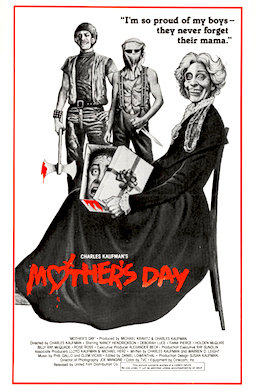
Mother’s Day is a pretty insane film and is a Troma production through and through. However, it can also be incredibly unsettling at times and even the bleakest Troma comedy still makes the film extremely uncomfortable for prolonged periods. The fact so much comedy can be mined out of a rape-revenge narrative is impressive and probably entirely inappropriate. So yeah, totally Troma. That being said, it’s still a good film that plays with slasher tropes which had already become a thing by the time Mother’s Day released. It’s definitely the better of the films of the night, and the fact it was shot simultaneously with the first Friday the 13th (on the opposite side of the lake) makes it an incredibly interesting part of slasher film history. The film’s direction is effective and the performances are pretty good, particularly Beatrice Pons as “Mother.” The highlight of the film, however, is the actual revenge with the brothers being killed repeatedly.
Joe Bob Briggs took a bit of a back seat to guest Eli Roth for the premiere. At first thought this may seem disappointing, but Eli Roth’s enthusiasm for the films and encyclopedic knowledge was very satisfying. Obviously due to the current pandemic, the conversations did feel a little stilted, but they still proved entertaining and incredibly informative. Roth talked quite a bit about his personal connections to Mother’s Day, and how influential it was on his own career. One of the highlights in the discussion, one that opened up the film quite a bit, was the point made about how much time the film spends with the backwoods family developing them into full characters; a rarity for many slasher films at the time.
As a whole, Mother’s Day is good; it has little to do with the actual Mother’s Day and more to do with hillbilly rape in the woods, but it’s a good, drive-in quality movie. It has the Troma attitude, production values, and it was presented by informative, talented hosts providing insights. Not a bad way to start a season at all.

Best Line: “There are three rules in the film business – Distribution, distribution, distribution.” – Guy at the Pool Party
House by the Cemetery (1981)
Anne really lost her head, didn't she?#thelastdrivein @therealjoebob @kinky_horror @shudder pic.twitter.com/Wz4nH8tn8Q— Haunted MTL 🏳️🌈 (@HauntedMTL) April 17, 2021
Opening: Y’all ain’t using y’all correctly, ya hear?
House by the Cemetery is an Italian horror film. That statement alone has either pulled you in or driven you away a bit. Italian horror can be fairly divisive among horror fanatics and people tend to have strong feelings and are rarely passive in their response to seeing a Fulci, Argento, or Bava film. This exercise in dream logic is the 1981 directorial effort of Lucio Fulci. It stars Catriona MacColl, Ania pieroni, and Giovanni Frezza. The film is probably most infamous for the dubbing of the child character, Bob.
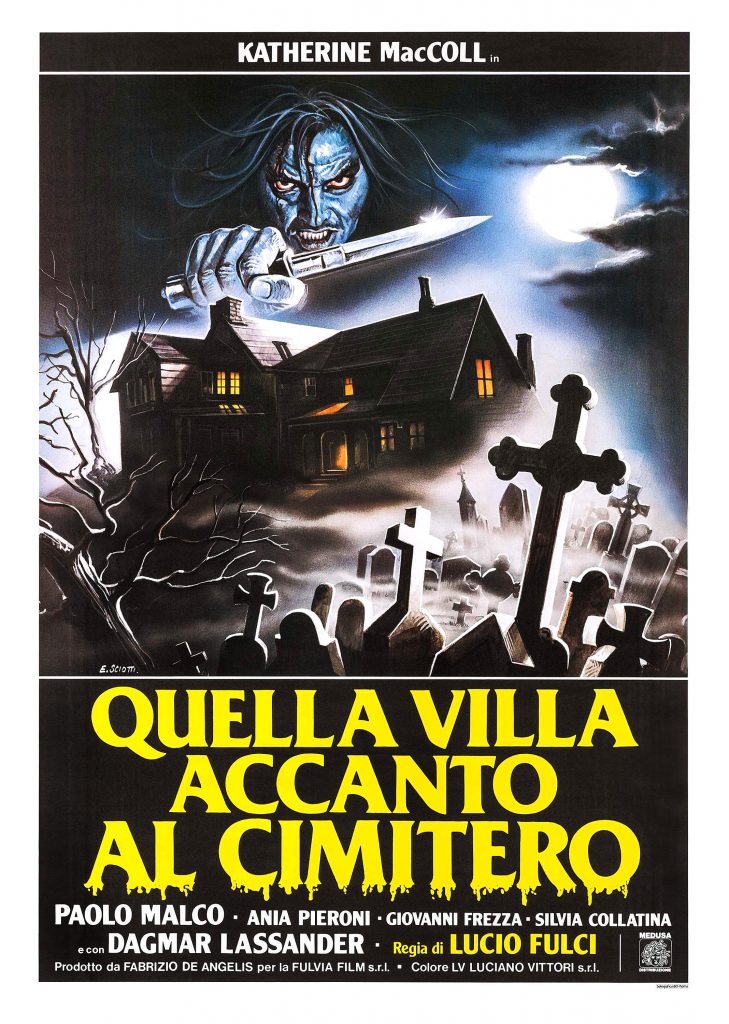
The movie is, like a great deal of Italian horror, more driven by sensation than narrative logic. The entire film is like a scattershot of horror. Giallo? Sure, why not, have a few stabbing scenes. Haunted house tropes? Of course, throw them in! Undead monsters? Fuck yes, toss one in during the last ten minutes. Oh, and we’ll throw in some ghosts at the end because people are gonna see this anyway… it doesn’t need to make sense! It may sound wildly dismissive, but that’s part of the fun of the movie, a mishmash of ideas to create mood. is the payoff worth it? Not really, but the journey can be a lot of fun. There’s fun moments of ridiculous gore, the goriest from of the night by far, and some legitimately creepy images. The film isn’t a masterpiece of story craft, but it doesn’t need to be, either.
Eli Roth is the first guess to spend the whole evening on the show. He again reveals his own connections to The House by the Cemetery and it’s all very entertaining. Joe Bob Briggs also contributes a little more in this one, having a greater tête-à-tête with Roth about the Italian film industry. The highlight of the host segments for the back half of the night was what was essentially a 3 minute crash course on Giallo by a breathless Eli Roth. We also learn a bit about the fascistic origins of the overabundance of dubbing in the Italian film industry (this article is a fascinating elaboration of this). Regarding the lack of logic in the film, Eli Roth puts it best. “it’s a fun film, don’t take it seriously.”
House by the Cemetery is far from the best film aired on The Last Drive-In, but it still provides some fun moments, genuine creeps, and enough eye closeups where you expect a shootout to begin at any moment. The downside, however, is the presence of Bob, who is maybe the most irritating child in horror film history

Best Line: “Ann? Mommy says you’re not dead. Is that true?” – Bob, having witnessed Ann’s murder.
Haunted MTL Drive-In Totals
As always, Shudder comes in with the clutch Tweets for the night’s totals, with a return of the Vomit meter!
Wait… Six and a half bodies? We’re gonna need an explanation here, @therealjoebob. #TheLastDriveIn pic.twitter.com/baCrcU5ZP4— Shudder (@Shudder) April 17, 2021 83 on the vomit meter?! 🤮 #TheLastDriveIn pic.twitter.com/pEtcRZ4ham— Shudder (@Shudder) April 17, 2021
As for our totals, I am not doing as many this time around, because sometimes I’d rather just watch the movie than track instances of things. Don’t worry though, he have some fun bits.
- Two Film Guest: Eli Roth
- Three Seasons (congrats!)
- Yuki Sighting x 2
- Darcy Jailed
- Audio Log of Doom
- Golfball and G-Spot Joking
- Girlfriend Killing Joking
- Gratuitous Rape-Training Montage
- Gratuitous Slideshow
- Free Associated Party Sequence
- One Dongle
- Spaghetti Gothic
- Special Ending Fu
- Troma Tally: 1
- Silver Bolo Award: Screaming Soup
- Darcy Cosplay: 3, “Mother,” Lucy, and Camp Counselor Chic
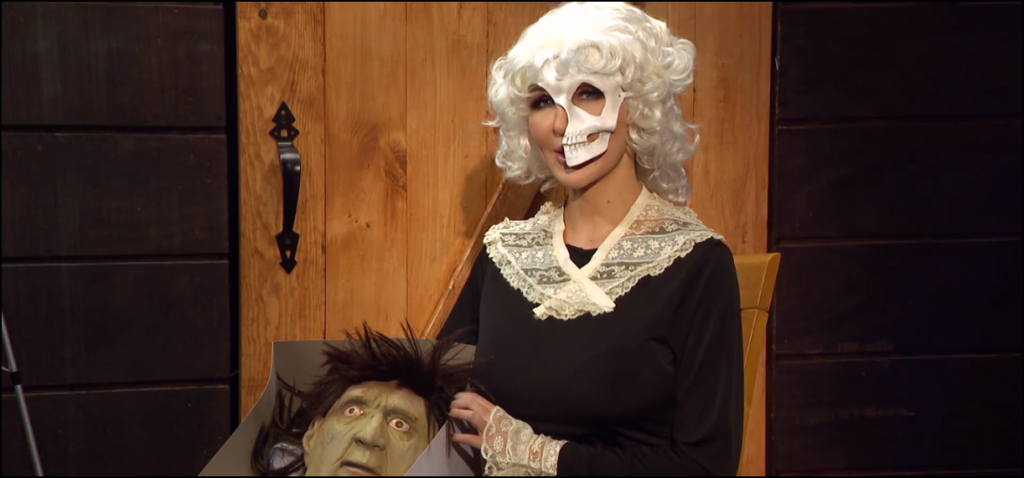
Episode Score
We’re still at the cabin, at least for the foreseeable future. I find myself missing the hominess of the trailer but the cabin has grown on me a bit – I just like my movie hosts in trailers, that’s all.. The presence of Eli Roth during both films was novel and a welcome change of pace. Ideally he’ll make a return, significantly less socially distanced, in the future. The presence of laughter on set was also a nice touch, with Joe Bob vamping with Austin and the rest of the crew periodically. Also commendable as ever is Darcy, who has settled in quite nicely to the role of Joe Bob’s counterpoint. Their back and forth feels more like a chat between mutual hosts and I am quite enjoying this evolution of the mail girl that this latest run of The Last Drive-In has presented.
Thinking about the evening, both films represent something extremely relatable for horror fans everywhere. Both films are personal favorites of Eli Roth, and while they may not be incredible movies, they are significant to him. Horror fans have those movies they love, some of their first exposures to horror that maybe aren’t classics in the critical-sense, but becomes classics due to the feelings and memories associated with them. My own include Child’s Play and The Changeling. It was nice to get a extended conversation between Joe Bob Briggs and Eli Roth. It felt like an appropriate change of pace for a movie hosting show that has entered it’s third season.
All in all, a welcome start to season three. Two fun movies, so different in tone, but alike in importance to Eli Roth.

Anyway, that is it for next week here at The Notes from The last Drive-In. We’ll be live tweeting and posting a review next week of episode two. What is in store? Who knows!
The tonal dissonance of the Big Bird alarm clock is *chef's kiss*
Has anyone at the Sesame Workshop seen this? I would love to get their impression of this.#thelastdrivein @therealjoebob @kinky_horror @shudder— Haunted MTL 🏳️🌈 (@HauntedMTL) April 17, 2021
David Davis is a writer, cartoonist, and educator in Southern California with an M.A. in literature and writing studies.

You may like
We have come now to the finale of season four of The Boys. And while it didn’t have the literal blood fireworks I wanted, someone did get ripped in half in the air. So, that’s pretty close.
As a note, I will try to avoid spoilers as much as possible. This ending was a hell of a gut punch that should be experienced as blindly as possible. That being said, I will not be able to avoid spoilers and still give a full legitimate review. Proceed at your own risk.
The story
The main storyline for this episode is the attempted assassination of President-Elect Robert Singer. The Boys join forces with the Secret Service to protect him. But, as we learned last episode, Annie has been replaced with a shapeshifter. A shapeshifter that was welcome not just into Hughie’s anus, but into the protective bunker in which the President-Elect is hiding.
What worked
The first thing I want to discuss about this episode is the ending. But we need to do this carefully.
The important thing here is that the ending breaks your heart on so many levels. So many terrible things are happening to characters that it’s almost hard to keep track. And each moment is significant to each character.
I cannot give a specific example. But no matter who your favorite character is, you’re going to weep for them.
Unless your favorite character is Sage. And this is the next thing that made this episode so fantastic.
I don’t think I’m spoiling anything to say that Sage’s plans worked out exactly as she wanted them to. And she got exactly what she wanted.
What she wanted wasn’t power. It wasn’t money or fame or vengeance. It wasn’t to win the love of anyone. She just wanted to see if she could do it.
That is a terrific, terrifying motivation! Because all she wants is to play a massive game of chess with people as pieces. She doesn’t care about anyone. She just wants to see how many people she can manipulate. She just wants to set things on fire to see if she can.
Fantastic. A plus villain work.
The next thing I want to discuss is a cornerstone of the whole series.
The morality of The Boys shifts through the series. While it’s very much a battle to save the world from overpowered super monsters, it’s also a battle for the souls of our real heroes. And in that battle, there are two warring factors. We have Hughie, always trying to bring everyone up to a better level. And we have Butcher, who has no problem at all hitting rock bottom with a shovel in hand to do some more digging.
In this episode, we saw almost every member of The Boys challenged. Will they rise to their higher angels, or sink with their demons?
On a similar note, I am so glad that the writers kind of addressed my issues with Annie. They did this by having the shapeshifter get right into her face and accuse her of thinking that she’s better than everyone.
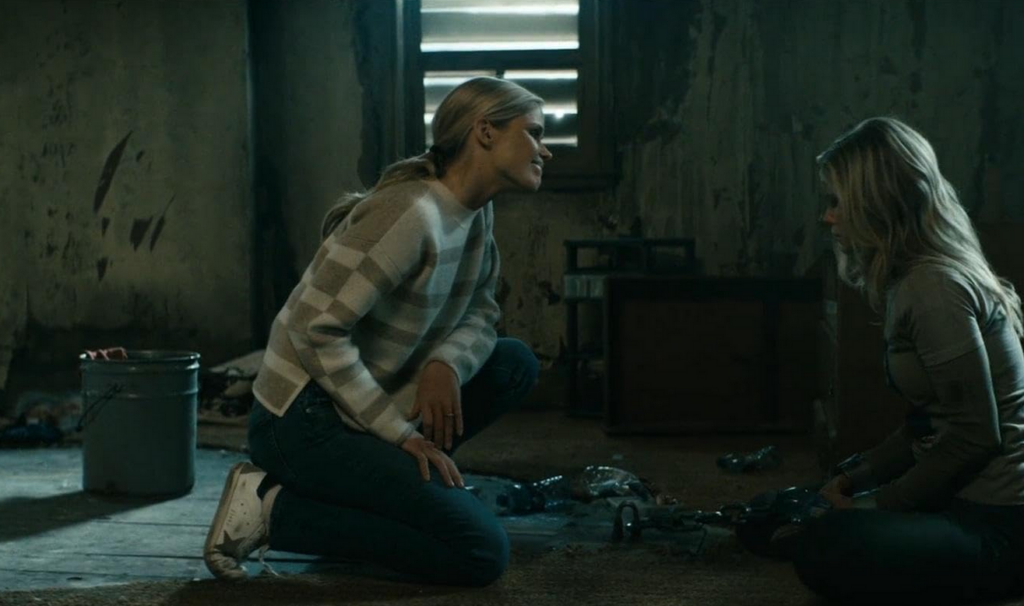
While that was devastating for the character, it was a little cathartic for those of us who felt like Annie was a little too good of a good guy.
What didn’t work
This is a small matter, but it is an issue that I want to address. After Annie finds out that Hughie slept with her doppelganger, she is furious at him.
In addition to this being unfair, it’s also a very cliche element to add. In almost every instance of a lookalike in fiction, there’s a moment where the love interest of the victim is fooled. Or almost fooled. And it’s always the same fight. It’s just played out and predictable. I’m just glad that it didn’t last very long.
Now that we’ve come to the end of the season, I can officially say that it was amazing. The story was deep and rich. The special effects were a stomach-turning good time. The character development was spot-on and satisfying. And, of course, it left me just about gagging to see what happens next. Unfortunately, it looks like we’ll have a bit of a wait. Because as of right now, the fifth season isn’t expected until 2026.

We’ve reached the second to last episode of The Boys, season four. And, as is appropriate for the penultimate episode of any show, things have to get a lot worse before they can get better.
Let’s discuss.
The story
Christmas is coming, and the whole world is getting ready. Ryan, despite being very clear that he didn’t want to appear on any TV shows or movies, has been strong-armed into participating in a Vought puppet Christmas special. He draws the line, though, when asked to sing about turning one’s parents in if they start talking about woke things.
Meanwhile, The Boys are trying to keep each other together. Butcher decides to take Sameer to the rest of the team. He also gets Frenchie out of prison, hoping they can make the Sup virus necessary to finally take down Homelander. Instead, this decision means disaster for one member of the team.
What worked
I first want to talk about Ryan’s speech near the end of the episode. Because it was exactly the moral of this whole story.
Ryan’s dad is a monster. His stepdad is also kind of a monster. But Ryan is a good kid. He cares about people, about family. And while he loves Homelander and Butcher, he doesn’t want to be like them.
Even better, this speech sounded like something a kid would say. Ryan didn’t open his mouth and start sounding like a college student all of a sudden. He sounds like a kid who misses his mom and wants to live up to the good standards she set for him. And I think that’s terrific.
Speaking of Homelander, he shot himself in the foot in this episode. I said earlier in the season that his hubris was going to be his downfall, and I was right. Without Sage, he just has the same weaknesses he’s always had. He’s going to fail because he just isn’t clever enough or patient enough to succeed.
Without Sage, I think a win is in the bag for The Boys. This isn’t to say that Homelander by himself isn’t dangerous. It’s just that he’s more like a wildfire than a controlled burn. He’s going to cause a lot of damage, but not get anything he wants out of it.
More’s the pity for him and everyone else who has to share his world.
Finally, I am thrilled with A-Train’s redemption story. I love that he wants to be a good person not to save himself, but to be a good person. His honest, pure and warm reaction to that little kid smiling at him in the last episode was heartwarming. It changed him in a moment, bringing to light a goodness that he’s been keeping under wraps for a long time.
This, along with Ryan’s courageous speech, proves once again what The Boys does so well. Yes, it’s gruesome. Yes, there’s blood and balls and batshit events. Yes, someone occasionally gets ripped in half. But there is a true human goodness in the story. One that we catch glimpses of. There are good people among the monsters. There is hope for redemption.
What didn’t work
Of course, so few things in this life are perfect, and this episode was no exception. For instance, I was irritated by the insinuation that Butcher cheated on his wife.
That just doesn’t make any sense. We’ve seen flashbacks of Billy and Becca. They were happy. He was happy. He was head over heels for her. And I don’t think it’s realistic or necessary for the character to throw in that he cheated. It does nothing to add to the story, it’s just a weird and offputting moment.
Doesn’t Butcher have enough to hate about himself? Can’t we just give him that at least he was a good husband?
Finally, I kind of hate that we ended up with Annie being caught. It’s just cliche, which is something I don’t normally say about this show. It feels lazy unless they do something very clever with it in the last episode. Which, I suppose, they might.
Next up is the season finale. And with this season being as insane as it has been, I’m expecting nothing short of bloody fireworks. And I mean literal fireworks of blood. At this point, would it surprise anyone?
 (4 / 5)
(4 / 5)
Episode six of The Boys was one of the most surprising episodes of the series so far. And that is certainly saying something. Because this season has so far been bonkers.
The story
Our episode today revolves around a party at Tek Knight’s lovely mansion. Yes, it does look just like Wayne Manor.
The Boys know that Tek Knight is working with Homelander on something, but they don’t know the details. So they decide to send Hughie in to bug the mansion.
Because that’s worked so well the other two times he’s tried to hide a bug!
It should surprise no one that this time goes no better. Hughie finds himself in Tek Knight’s basement. And by that I mean his BDSM dungeon.
Meanwhile, the party upstairs is no less disturbing. Homelander and Sage are trying to convince some well-off political donors to support a cue after the election. When pressed for details on his plan, Homelander freezes. He looks to Sage for help, but she wasn’t recently shot in the head and still in the junk food stage of her healing.
Fortunately, or unfortunately depending on your point of view, Neuman jumps in and saves the day.
What works
If I’m going to say one thing about this episode, it didn’t hold back at all. I didn’t expect them to show a character masturbating, sitting their bare behind on a cake, or spraying breastmilk into someone’s face. But every time I thought they’d cut the scene and let something be left to our imagination, they did not do that.
This is a dangerous move. Whenever you show the monster, you run the risk of them not being scary enough, or gross enough. As Stephen King says in Danse Macabre, to leave this sort of thing to the imagination if the reader makes things so much worse. So when they finally experience the monster, they might say that this isn’t so bad. It could have been so much worse.
But in this case, they managed to avoid that by making the scenes, especially the ones in Tek Knight’s dungeon, so much worse than I imagined it would be.
What doesn’t work
While this was a deeply disturbing episode in many ways, there was one really innocent and sweet moment.
And yes, I did have a problem with it.
Confronted by Firecracker, Annie decides to apologize for spreading rumors about her when they were kids. She tells her that she is genuinely sorry.
And I believe her. I don’t think Firecracker did, but I did.
So why is this an issue? Because I’m starting to think that Annie is maybe too nice. She is too good.
I know that Annie is our good guy. But every one of the other good guys has flaws. Hughie let his pride get in the way and took Temp V. MM hid himself from his daughter instead of teaching her to work through her emotions. Kimiko is far too closed off and has a hard time trusting others. Frenchie numbs himself with drugs. And well, what hasn’t Butcher done?
It is unrealistic that Annie is just so kind and so flawless. We all have shadows in our personalities. We all have weaknesses, we all mess up. We all do things we wish we could take back. The fact that Annie doesn’t seem to have anything like that is not just unrealistic. It’s infantilizing.
Give her some deep dark secrets. Give her something real to regret.
This was a shocking episode, even for someone fairly jaded like me. I wasn’t expecting the sort of weird sexual depravity, though I guess maybe I should have seen it coming. It was dark, upsetting, tense, and funny as hell. And with just two episodes left in the season, I can imagine the stakes are only going to get higher.
 (4 / 5)
(4 / 5)
By the way, if you like my writing you can get my short story, Man In The Woods, on Smashwords and Amazon.

